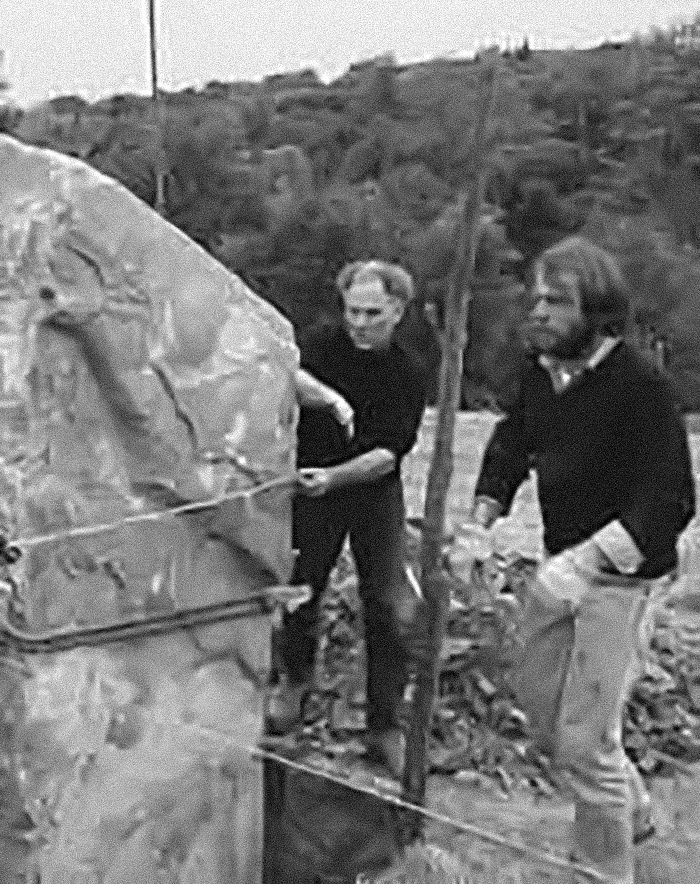Richard Serra (San Francisco, 1938 – )
Richard Serra is among the first artists invited to work at Celle in 1981. Upon his arrival, he explores the park and finds, in front of the Cascina Terrarossa, a steep slope devoid of vegetation, almost rectangular in shape. His initial inspection is in motion: energetically walking, the artist covers the entire area, taking many Polaroid photographs. Shortly thereafter, he reveals his first intentions: “I won’t work with iron. I’m not against anything or anyone here. What is the local stone, these gray layers I see everywhere?”
So, in January 1982, he visits the sandstone quarry in Firenzuola, where he finds a vein large enough to generate eight blocks with the same characteristics, measuring approximately 213cm x 147cm x 147cm each. Meanwhile, to complete the work in Celle, the artist postpones an important solo exhibition at the Centre Pompidou in Paris, risking losing the commission. Once the farm workers prepare the eight foundations in precisely marked points in the field, everything is ready to install the artwork, a process that proves challenging because the steep terrain doesn’t allow for the use of cranes throughout the entire area. After the inauguration in Celle in June 1982, Serra is free to resume the commission for Paris, where, the following year, alongside the solo exhibition, the famous artwork “Clara Clara” for Place de la Concorde is also created.






